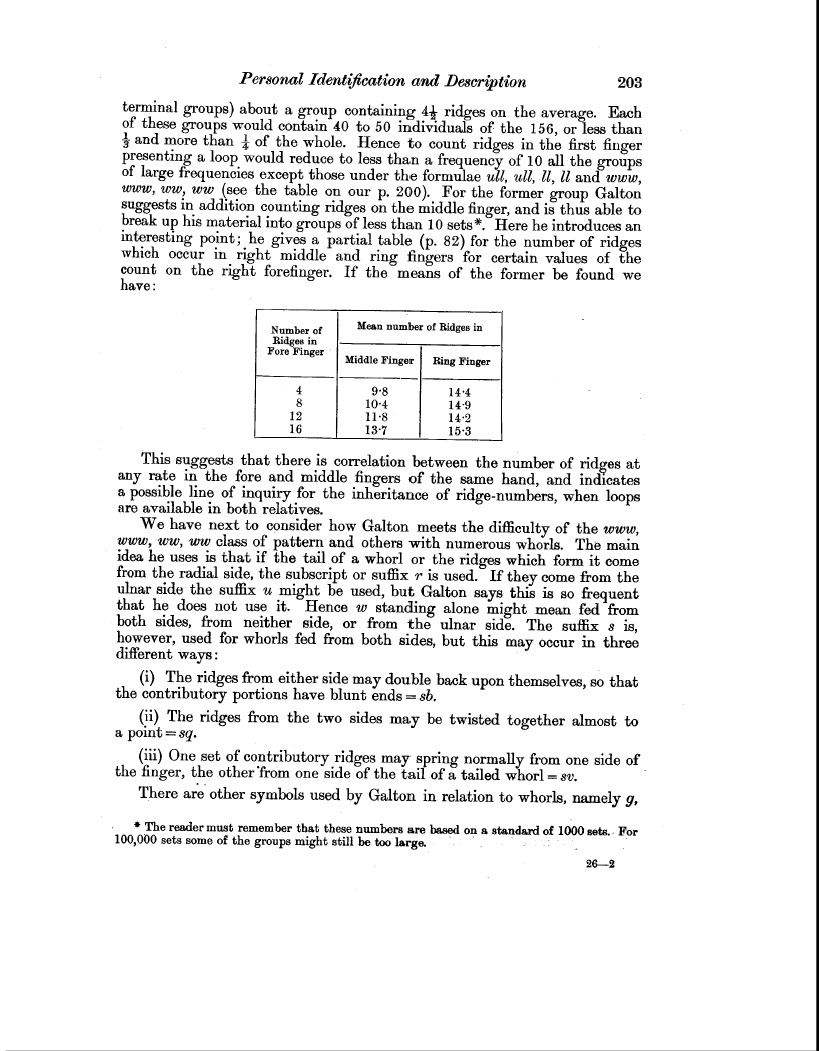| ||||||

OCR Rendition - approximate
Personal Identification and Description 203 terminal groups) about a group containing 4-i- ridges on the average. Each of these groups would contain 40 to 50 individuals of the 156, or less than and more than 4 of the whole. Hence to count ridges in the first finger presenting a loop would reduce to less than a frequency of 10 all the groups of large frequencies except those under the formulae ull, ull, 11, 11 and www, www, ww, ww (see the table on our p. 200). For the former group Galton suggests in addition counting ridges on the middle finger, and is thus able to break up his material into groups of less than 10 sets*. Here he introduces an interesting point; he gives a partial table (p. 82) for the number of ridges which occur in right middle and ring fingers for certain values of the count on the right forefinger. If the means of the former be found we have:
This suggests that there is correlation between the number of ridges at any rate in the fore and middle fingers of the same hand, and indicates a possible line of inquiry for the inheritance of ridge-numbers, when loops are available in both relatives. We have next to consider how Galton meets the difficulty of the www, www, ww, ww class of pattern and others with numerous whorls. The main idea he uses is that if the tail of a whorl or the ridges which form it come from the radial side, the subscript or suffix r is used. If they come from the ulnar side the suffix u might be used, but Gaiton says this is so frequent that he does not use it. Hence w standing alone might mean fed from both sides, from neither side, or from the ulnar side. The suffix s is, however, used for whorls fed from both sides, but this may occur in three different ways (i) The ridges from either side may double back upon themselves, so that the contributory portions have blunt ends = sb. (ii) The ridges from the two sides may be twisted together almost to a point = sq. (iii) One set of contributory ridges may spring normally from one side of the finger, the other Trom one side of the tail of a tailed whorl = sv. There are other symbols used by Galton in relation to whorls, namely g, * The reader must remember that these numbers are based on a standard of 1000 sets.. For 100,000 sets some of the groups might still be too large. 26-2
| |||||||||||||||||||||||